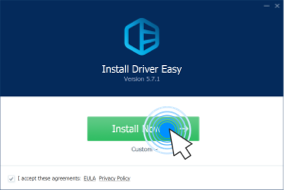You’re about to connect your wireless headphones or transfer files, but Bluetooth is nowhere to be found. No toggle, no icon, nothing in Device Manager, or even the system tray. If this sounds familiar, don’t worry—you’re not alone.
The good news? You can get it back! In this article, we will show you seven most effective fixes to help you fix the Bluetooth disappearing issue. Just work your way through the list until you find the one that does the trick.
6 fixes for Bluetooth disappearing in Windows 11 issue
1. Update your bluetooth driver
One of the most common reasons Bluetooth disappears in Windows 11 is an outdated or corrupted driver. Your system relies on drivers to communicate with hardware, and when the Bluetooth driver is missing, outdated, or incompatible, the device may just vanish. Updating the driver can often bring Bluetooth back instantly. You could update the driver manually by searching the manufacturer’s website, figuring out the correct version, and installing it yourself—but this can be time-consuming and frustrating. If you’d rather skip all the hassle, you can do it automatically with Driver Easy.
Driver Easy is an easy-to-use driver updater that automatically detects outdated or missing drivers and updates them with just a few clicks. With Driver Easy, you don’t need to worry about finding the right driver. All drivers in Driver Easy are certified and WHQL (Windows Hardware Quality Labs) tested, which means they meet Microsoft’s standards for compatibility and reliability. You can update your drivers confidently, knowing they are safe and optimized for your system:
- Download and install Driver Easy.
- Run Driver Easy and click the Scan Now button. Driver Easy will then scan your computer and detect any problem drivers.
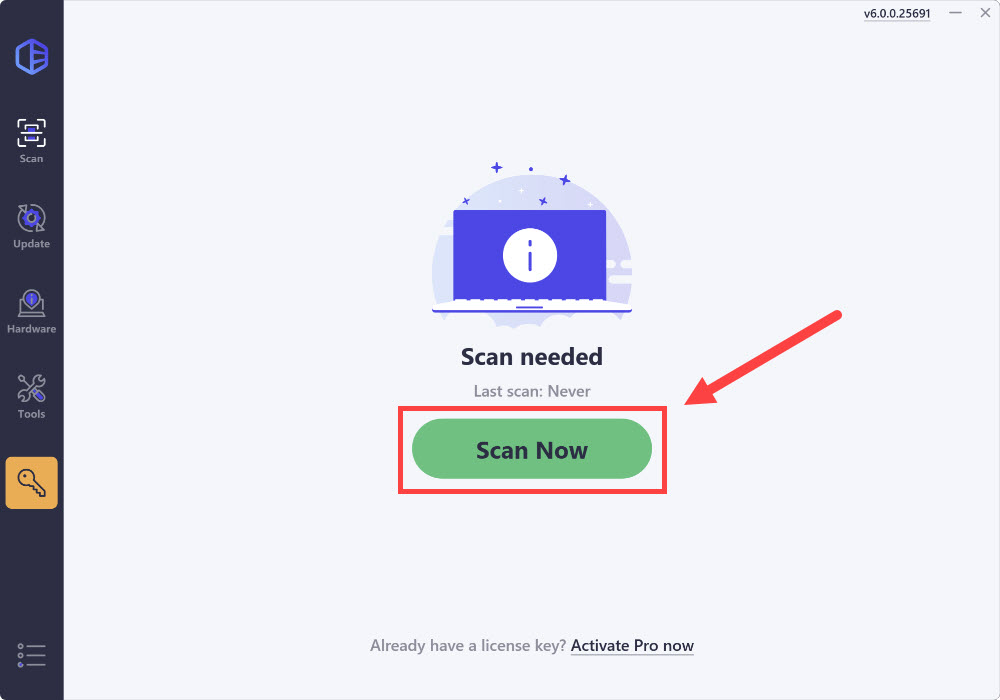
- Click Update All to automatically download and install the correct version of all the drivers that are missing or out of date on your system (this requires the Pro version – you’ll be prompted to upgrade when you click Update All).
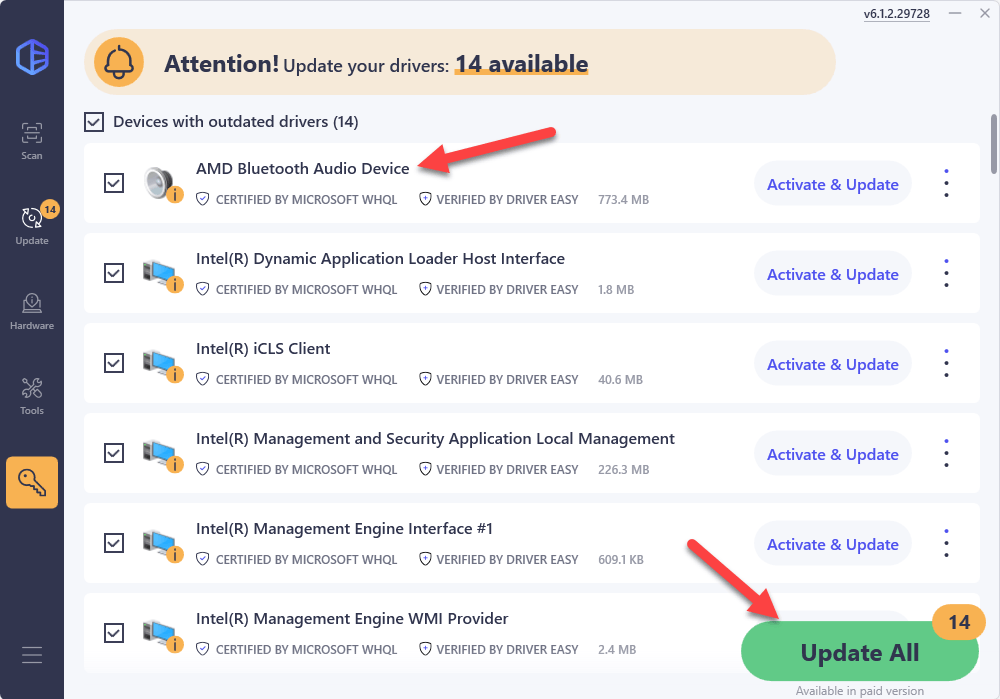
Alternatively, you can start a 7-day Free Trial, which gives you access to all premium features. After the trial, you can upgrade to the Pro version. - Restart your computer for the changes to take effect.
- Try connecting your device or checking if the Bluetooth icon appears on your computer. If yes, then congrats! You’ve resolved the issue. If Bluetooth is still missing, please move on to Fix 2, below.
2. Reinstall your Bluetooth driver
If updating the driver didn’t bring Bluetooth back, reinstalling it can give Windows a fresh start. Sometimes, a corrupted or improperly installed driver can cause Bluetooth to vanish entirely. Removing and reinstalling it forces Windows to detect the hardware again and load a clean version of the driver.
- On your keyboard, press the Windows logo key and X, then select Device Manager.
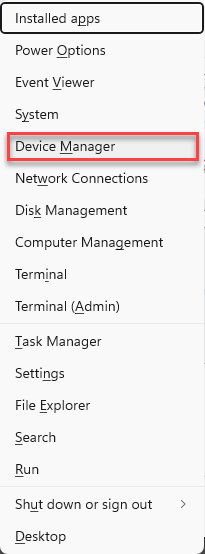
- In the Device Manager window, double-click on Bluetooth to expand the category.
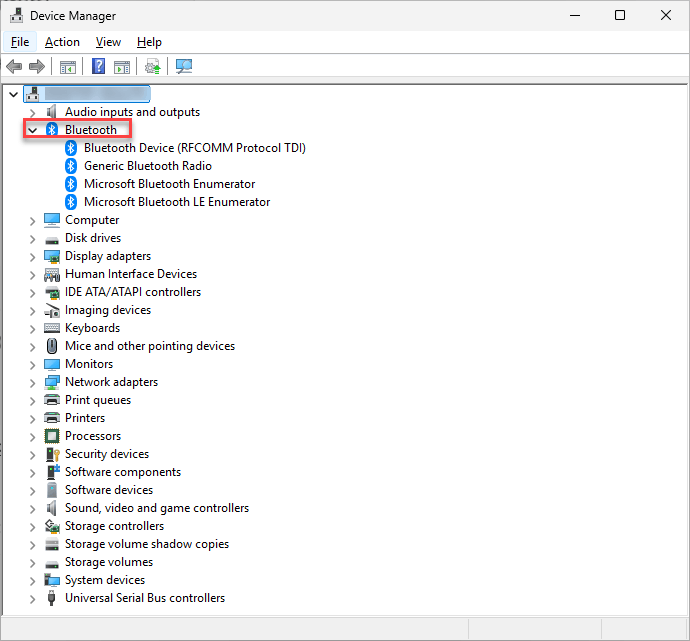
If you don’t see it, click View > Show hidden devices.
Still nothing? That could mean Bluetooth is disabled at the system level, you may want to skip ahead to Fix 3. - Right-click your Bluetooth adapter (it may be listed as a generic device like “Bluetooth Radio” or “Intel Wireless Bluetooth”) and select Uninstall device.
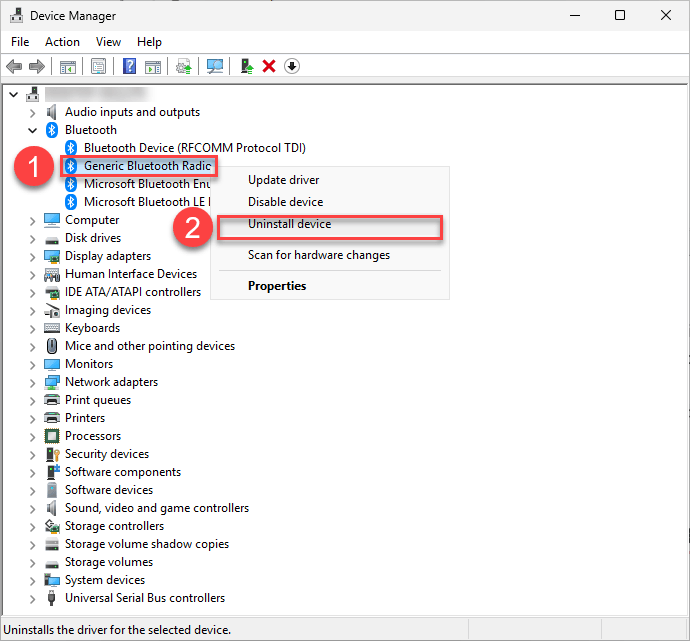
- If prompted, click Uninstall to confirm.

- Restart your PC so that Windows automatically reinstalls the Bluetooth driver with a clean version.
- Check to see if Bluetooth is back. If yes, then great! If it’s still not showing, please move on to Fix 3, below.
3. Restart Bluetooth services
Bluetooth relies on several background services to function properly. If one of these services is malfunctioning or has been accidentally disabled, Bluetooth might not work. In this case, restarting the Bluetooth services can often resolve the issue.
Here’s how to do it:
- On your keyboard, press the Windows logo key and R, type services.msc, and hit Enter.

- Scroll down to locate Bluetooth Support Service, then right-click on it and select Restart. (If it’s not running, choose Start instead.)
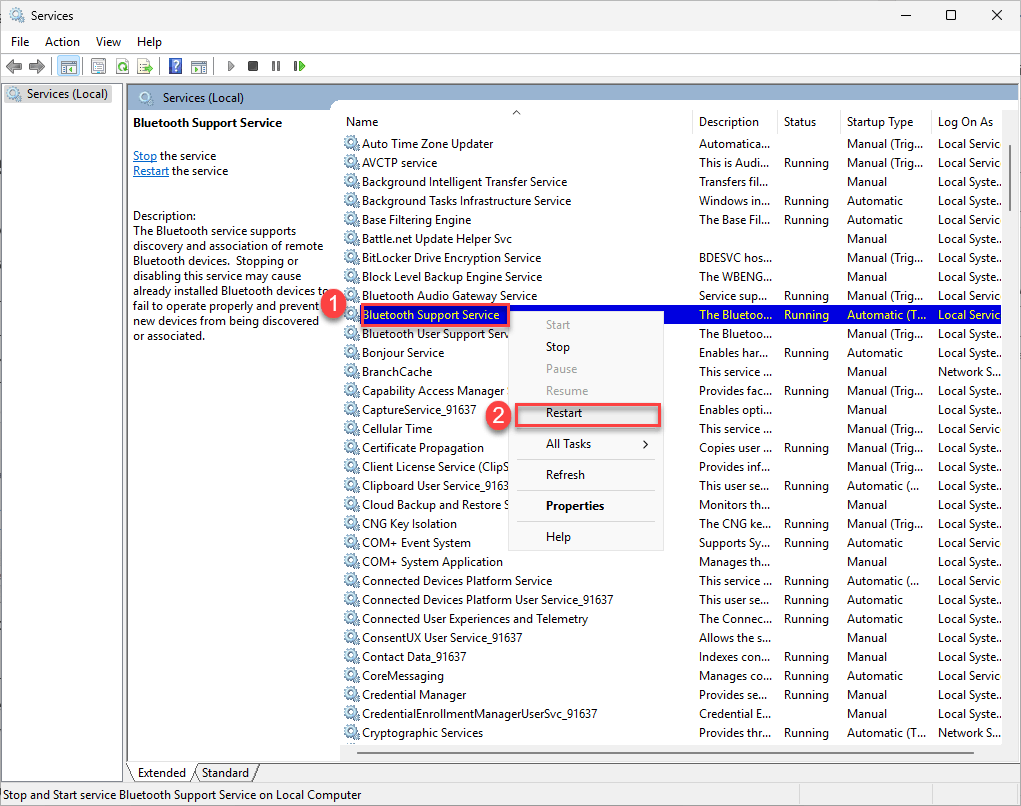
- Right-click Bluetooth Support Service again, select Properties.
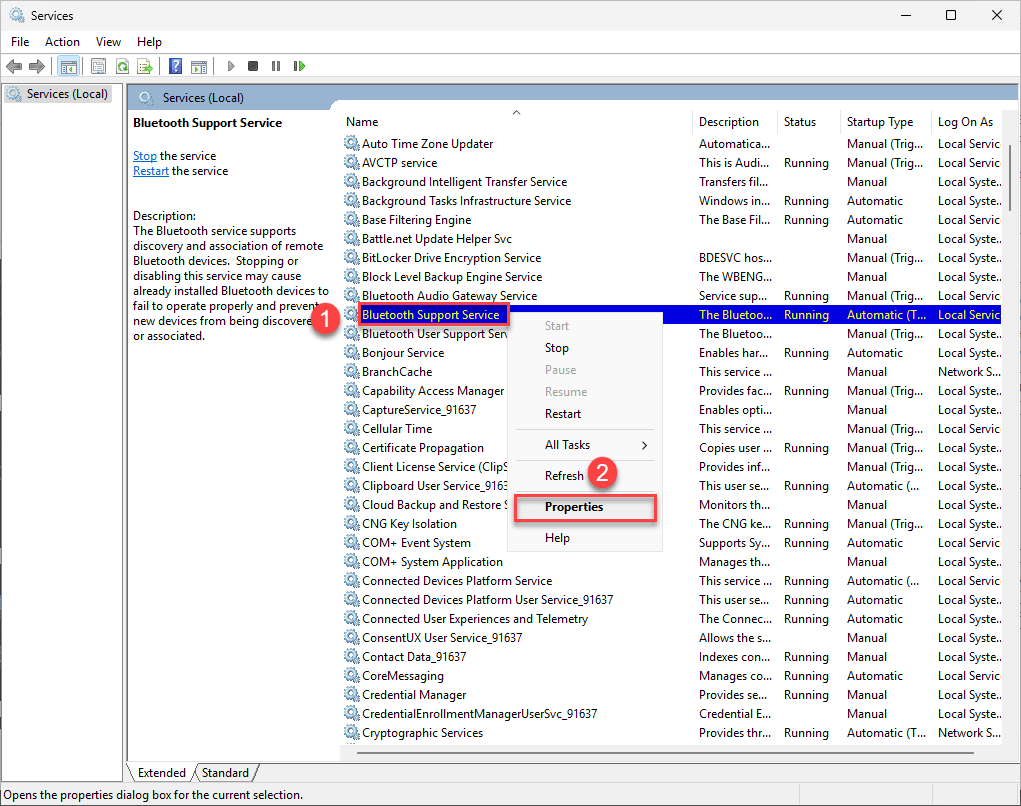
- In the pop-up window, set the Startup type to Automatic. Then click Apply > OK.
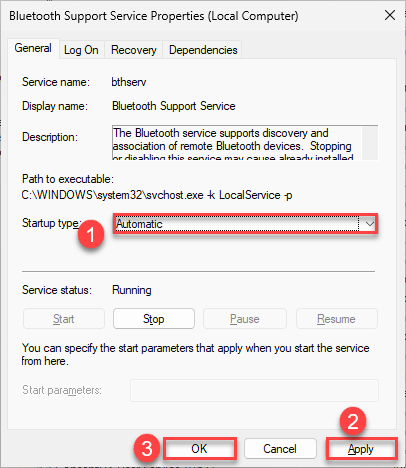
- Restart your computer.
- Try connecting a Bluetooth device or see if the Bluetooth icon shows up in the system tray. If it shows up, then the issue is resolved. But if it’s still not working, please proceed to Fix 4.
4. Perform a power cycle
Bluetooth may sometimes disappear due to temporary glitches or power inconsistencies. A quick way to rule this out is by performing a power cycle, which helps reset the hardware and clear any residual electrical charges. This simple step can often bring Bluetooth back without any complex troubleshooting.
Here’s how to do it:
- Save your work and close any programs.
- Completely turn off your computer.
- Unplug your PC from its power source.
- While the PC is unplugged, press and hold the power button for about 15-30 seconds. This helps to discharge any residual power.
- Reconnect your computer to the power source.
- Press the power button to turn on your PC.
- Check if Bluetooth is back. If you can see the Bluetooth icon or connect a device, then the issue is resolved. If Bluetooth is still missing, move on to Fix 5, below.
5. Enable Bluetooth in BIOS/UEFI
Sometimes, Bluetooth can be disabled directly in the BIOS or UEFI settings. If you’ve recently updated your system or made any hardware changes, Bluetooth may have been turned off at the system level.
Here’s how to check and enable it:
- Restart your PC and press the appropriate key repeatedly to enter the BIOS or UEFI settings.
- Acer: F2 or DEL
- ASUS: F2 or DEL
- Dell: F2 or F12
- HP: ESC or F10
- Consult your motherboard’s manual if unsure
- Once in the BIOS/UEFI interface, locate the section related to integrated peripherals or advanced settings.
- Look for an option related to Bluetooth. It may be listed as “Bluetooth,” “Wireless,” or “Internal Bluetooth.”
- If Bluetooth is disabled, change the setting to Enabled.
- Press the appropriate key to save changes and exit (usually
F10). - Restart your PC to see if Bluetooth is working. If it’s still not working, move on to Fix 6.
6. Use a Bluetooth 5.0+ USB adapter (Plug-and-Play)
If none of the previous fixes worked, it’s possible that your PC’s built-in Bluetooth hardware is faulty or unsupported. In this case, the most reliable solution is to use a Bluetooth 5.0+ USB adapter—a quick and effortless way to restore Bluetooth functionality.
A Bluetooth USB adapter works independently of your PC’s internal Bluetooth module, meaning it bypasses any software or hardware issues that may be causing Bluetooth to disappear. With plug-and-play functionality, you can simply insert the adapter into a USB port, install any necessary drivers (if required), and immediately regain Bluetooth connectivity.
How to get a Bluetooth 5.0+ USB adapter and set it up:
- Purchase a Bluetooth 5.0+ USB adapter (Plug-and-Play) from a reputable brand—preferably one that is explicitly advertised as plug-and-play for Windows 11.
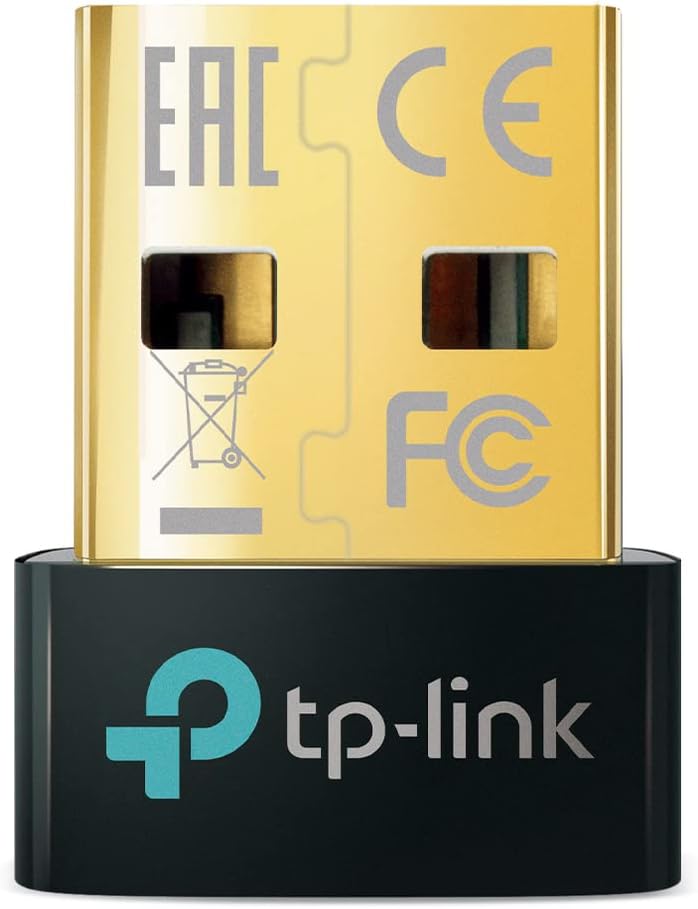
- Plug the adapter into a USB port on your PC.
- Windows should automatically detect it and install any necessary drivers.
- Check Device Manager and Settings to confirm Bluetooth is now active.
At this point, you can re-connect your device to the PC and the Bluetooth functionality should have been restored.
While this fix is a great way to get Bluetooth working again, it’s often best used when all other options have been exhausted. It’s a solid solution, but since it bypasses your internal hardware, it’s typically considered a last resort for those who’ve tried everything else.
To wrap things up, we hope one of these solutions has helped you restore Bluetooth functionality on your Windows 11 PC. While Bluetooth issues can be frustrating, these fixes should cover the most common causes, from driver problems to hardware glitches. If you’re still experiencing issues, it might be worth reaching out to a professional for further diagnosis. Otherwise, enjoy your restored Bluetooth and get back to connecting your favorite devices!





